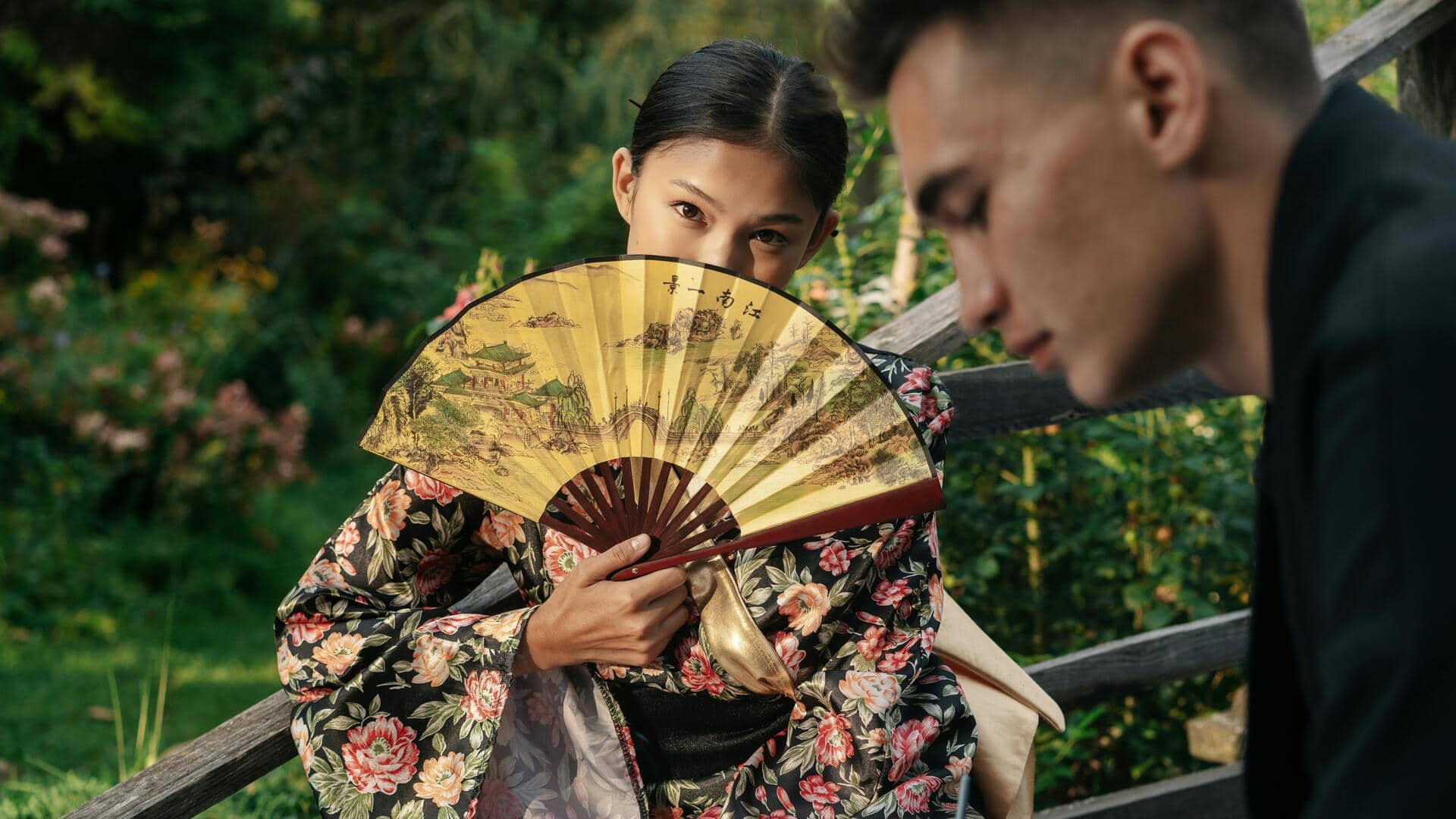
A guide to Japanese wedding kimono symbolism
What's the story
Japanese wedding kimonos are a beautiful blend of tradition and symbolism. The colors and patterns chosen for these garments aren't just for the sake of aesthetics, but also carry deep cultural meanings. Each element is carefully selected to bring good fortune, happiness, and prosperity to the couple. Knowing these meanings gives a deeper insight into Japanese wedding customs and traditions.
#1
Red: Symbol of happiness and good fortune
In Japanese culture, red is considered a powerful color that symbolizes happiness and good fortune. It is commonly used in wedding kimonos to bring prosperity to the couple's life together. The color is also associated with protection against evil spirits, making it a popular choice for brides who want to ensure their marriage starts on a positive note.
#2
White: Purity and new beginnings
White is also a common color in Japanese wedding kimonos, symbolizing purity and new beginnings. It signifies the bride's transition into married life, leaving behind her past as she embarks on this new journey with her partner. White also represents simplicity and clarity of purpose in the relationship.
#3
Patterns: Nature's influence on design
The patterns on Japanese wedding kimonos are often inspired by nature, such as cherry blossoms or cranes. Cherry blossoms symbolize fleeting beauty and the transient nature of life, while cranes represent longevity and fidelity. These motifs are carefully chosen to reflect the couple's hopes for their future together.
#4
Gold accents: Wealth and prosperity
Gold accents are often added to a wedding kimono to symbolize wealth and prosperity. In Japanese culture, gold is considered a sign of abundance, making it an auspicious addition to any wedding attire. The use of gold thread or embellishments can elevate the overall appearance of the kimono, while also imparting its symbolic significance.